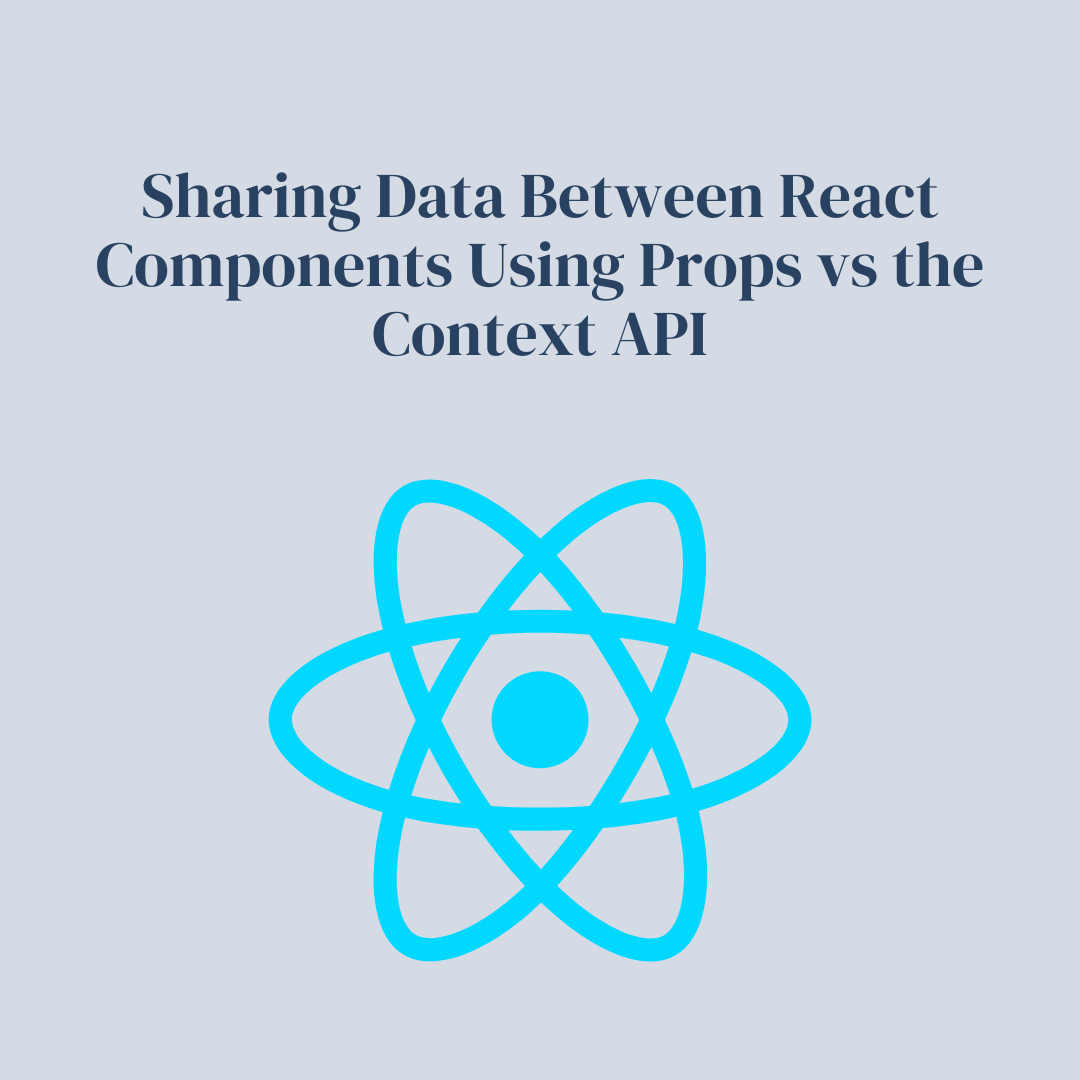Sharing Data Between React Components Using Props vs the Context API
Introduction:
In React, there are two primary ways to share data between components: using props or using the Context API. Both methods have their own benefits and drawbacks, and choosing the right method depends on the specific needs of your application. In this blog post, we'll explore both methods in detail and provide examples of when to use each one.
Section 1: Using Props
Using props is the most common way to share data between components in React. Props are passed down from parent components to child components, allowing for a unidirectional data flow. When a parent component updates its state, it can pass the updated data down to its child components through props.
Example:
Let's say we have a parent component that contains a list of names, and we want to pass this list down to a child component to display. We can do this using props:
// Parent Component import React, { useState } from 'react'; import ChildComponent from './ChildComponent'; function ParentComponent() { const [names, setNames] = useState(['Alice', 'Bob', 'Charlie']); return ( <div> <h1>List of Names</h1> <ChildComponent names={names} /> </div> ); } // Child Component import React from 'react'; function ChildComponent(props) { const { names } = props; return ( <ul> {names.map((name, index) => ( <li key={index}>{name}</li> ))} </ul> ); }
In this example, the ParentComponent maintains the state of the names list and passes it down to the ChildComponent through props.
Section 2: Using the Context API
The Context API is another way to share data between components in React. It allows for a global state that can be accessed by any component in the tree, without the need for prop drilling. The Context API can be especially useful for larger applications with many levels of nested components.
Example:
Let's say we have a user authentication system in our application, and we want to pass the user's authentication state down to multiple child components. We can use the Context API to create a global state for this data:
// UserContext.js import React, { createContext, useState } from 'react'; export const UserContext = createContext(); export function UserProvider(props) { const [isAuthenticated, setIsAuthenticated] = useState(false); return ( <UserContext.Provider value={{ isAuthenticated, setIsAuthenticated }}> {props.children} </UserContext.Provider> ); } // Parent Component import React from 'react'; import ChildComponent from './ChildComponent'; import { UserProvider } from './UserContext'; function ParentComponent() { return ( <UserProvider> <div> <h1>User Authentication System</h1> <ChildComponent /> </div> </UserProvider> ); } // Child Component import React, { useContext } from 'react'; import { UserContext } from './UserContext'; function ChildComponent() { const { isAuthenticated, setIsAuthenticated } = useContext(UserContext); return ( <div> {isAuthenticated ? ( <button onClick={() => setIsAuthenticated(false)}>Log Out</button> ) : ( <button onClick={() => setIsAuthenticated(true)}>Log In</button> )} </div> ); }
In this example, the UserContext creates a global state for the isAuthenticated boolean and the setIsAuthenticated function. The ParentComponent wraps its child components in the UserProvider, making the global state accessible to all of its children. The ChildComponenthen accesses the global state using the useContext hook, and renders a Log In or Log Out button depending on the value of isAuthenticated.
Section 3: When to Use Each Method
So when should you use props versus the Context API to share data between components? As a general rule, you should use props for passing down data to direct child components, and use the Context API for sharing data between components that are not directly related.
Use props when:
You only need to pass data down to a few levels of child components.
The data you are passing down is not likely to change frequently.
The data is only relevant to a specific subset of components.
Use the Context API when:
You need to share data between many levels of components.
The data you are sharing is likely to change frequently.
The data is relevant to many different components.
Conclusion:
In this blog post, we explored two ways to share data between components in React: using props and using the Context API. Both methods have their own benefits and drawbacks, and choosing the right method depends on the specific needs of your application. By understanding when to use each method, you can write more efficient and maintainable code in your React applications.
